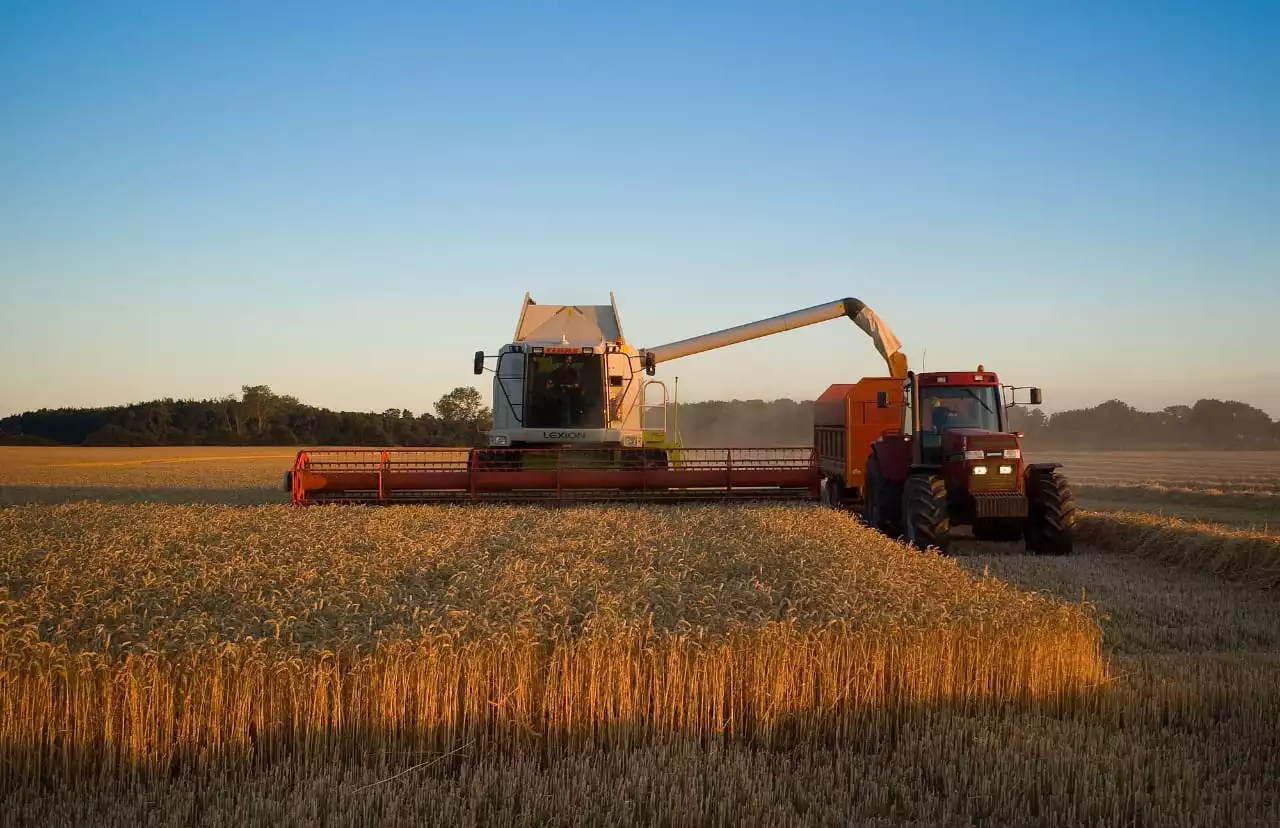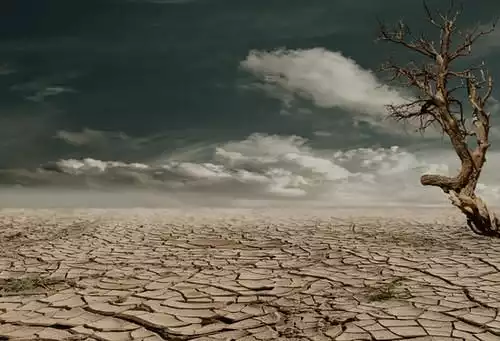The economic conditions that pushed the United States into the great famine of the 1920s-30s are eerily similar to those of the 21st century, namely: debt crisis, profit driven mismanagement of environmental resources, and foreclosure of personal and private property. These forces have historically worked in concert to create a downward spiral of food affordability and agronomic recession that ends in mass starvation for the working class.
Predatory agribusiness and real estate systems have not changed in any meaningful way throughout modern history; Western agriculture is fundamentally designed to feed industry, not people. Economic demand for food products is not driven by the needs of the people but by consumer purchasing power; economic supply of food product1s is driven by a producer’s ability to extract profit from that power. Under the capitalist mode of production, failure of immaterial resources like money can, has, and will cause entire material systems to collapse.
In order to mitigate the damages already caused by the petroleum industry and profit driven agribusiness we must actively reverse their effects and shift our societal goals from exploitative, individualist competition towards egalitarian cooperation. Economic degrowth, regenerative agriculture, and agrarian reform known in the United States as Land Back are three major tools
that can not only avert famine but also actively engineer a brighter future in coordination with nature instead of industrial domination.
20th Century Dust Bowl - a brief history of where we’re headed
Throughout its development, the United States has established itself as an agricultural hyperpower with market dominance in domestic production and colonial plantation crops. This hegemony has been cultivated through unsustainable practices of fossil fuel farming and imposed upon the rest of the world by imperialist war and economic austerity. In its aggressive expansion, the US agronomy of today has entrenched itself in the same farming practices that Hugh Bennett warned of on March 21, 1935, when he directed the attention of Congress to a Nebraska dust storm blacking out the sun in Washington D.C. This infamous storm, along with the many that preceded and followed, would become known as the Dust Bowl era of US history—the tangible manifestation of economic collapse, market stagnation, and environmental disregard.
The Dust Bowl began when Savings and Loan banks in the 1920s – eager to exploit the inflated costs of real estate – were lending irresponsibly, at unsustainable interest rates, to American farmers. As farmers took on debt to invest in heavy machinery, substantial increases in harvest yields began to push prices down on staple commodities like wheat and corn. In the same way
that 21st century working people sold more of their time to service interest on personal debt, farmers had to expand their arable land and harvest more crops at lower revenue to make ends meet. For example, in 1930, 68 million acres of wheat yielded 824m bushels generating $848 million, but by 1932, 58 million acres of wheat yielded 942m bushels earning just $358 million[1]; a 14% increase in productivity leading to a 57% decrease in revenue over 2 years.
Under immense pressure from similar interest payments throughout the 20th century, American farmers began an era of ravenous expansion: swelling from 413 million acres of farmland in 1930 to 945 million in 2000[2], or from 25% to 50% of continental US landmass. Much of this land – formerly the Great Plains, with prairie grasses rooted more than 20 feet deep – was capable of soaking up more than 7 inches of rain in a single storm[3] and retaining it in one of the world's greatest deposits of rich, black topsoil. The destruction of the American prairie and its replacement with shallow-rooting, monoculture, agribusiness farming has directly decreased the amount of freshwater held within the interior US, contributing to both rising sea levels and
sustained drought.
Western agriculture necessitates expensive and constant supervision of water resources to combat the symptoms of drastically reduced water infiltration and retention in the ground. Once a section of land has been cleared of native plants, Western farmers use some combination of retention ponds, irrigation systems, subterranean aquifer, rain collection, and/or municipal water supply to hold moisture in the ground. With the Great Depression simultaneously crippling the ability of urban citizens to afford food, market prices could not satisfy the necessary financial input and bloated interest payments of most farming operations. Between 1929 and 1932 more than 30% of US farms were foreclosed[4], leaving over 100 million acres of tilled farmland completely barren and unmanaged, particularly in the Midwestern and Plains states.
The culmination of these economic issues was a very material and devastating period of drought and starvation in the US while unsold crops rotted in piles or dried out in fields[5] unreachable by the hungry and destitute masses.
Dust Bowl for the Space Age - a failure to adapt
In the modern United States, wages have stagnated to such a point that the 2022 consumer holds less purchasing power than they would in 1980 – a net negative for labor over 40 years of neoliberal financial development and trickle-down tomfoolery. This decrease in consumer dollar power has already fomented a steep recession in agricultural activity: farm debt is at an all-time
high, and farm profits are at all time lows[6]. Farmer suicide rates – normally only twice as high as the average – are increasing in tandem with drought conditions[7] as the Colorado River system fails. Meanwhile, farm foreclosure rates are breaking records across the corn belt[8], once again leaving millions of acres barren and unmanaged.
The average cost of cropland in the United States has increased 7.8% just from 2020 to 2021, and more than 75% since 2007[9]. Over the same 15 year period, farmland mortgage debt has climbed 267% from $112.7Bn to $301Bn[10], achieving a national total farm debt of $464.4Bn in 2022[11]. On top of this grim financial situation, geopolitics and capital interests have caused substantial cost increases in seed[12], fuel, fertilizer[13], and water[14] to compound the larger trend of failing farms. In reaction to the exploding cost of farm production, market prices are increasing, leading to a 12.2% increase in the consumer price index for “food at home” over the last year[15] and are projected to continue outpacing alarmingly high inflation.

Climate change is predictably disrupting agriculture as growing seasons shift, rain becomes unreliable, and megadroughts dry up dozens of major rivers across all six inhabited continents.
In the Southwest where North America is experiencing its worst drought, the Colorado, Arizona, Canadian, Red, Pecos, Arkansas, and Rio Grande Rivers are running dry[16] and others in the
agricultural heartland like the Gasconade River in southeastern Missouri have begun a deadly cycle of severe flooding[17] and extreme drought, greatly damaging crops, infrastructure, and livelihoods in the region. In California alone a million acres of farmland are expected to be lost to drought in 2022[18] as farmers make the financial decision to destroy established orchards and plow fields of immature crops with CA water prices at all time highs[19].
The severe unsustainability of this situation has farm operators and workers across the nation living in fear of foreclosure, and farm land in threat of dereliction. This will inevitably lead to increased drought and flood severity, increased food prices, and decreased nutritional availability and diversity for the vast majority of people. These crises will continue to coalesce
into a modern-day mega-famine across the American Southwest unless revolutionary changes are effected in the way our societies allocate resources.

What is to be done? - cohesive theory provides avenues for healing
The US began its slow recovery from the Dust Bowl and Great Depression – thanks very largely to Hugh Bennett – when Congress passed the Soil Conservation and Domestic Allotment Act of 1936. The act not only gave the USDA purview over soil conditions and water conservation, but also directly increased wages for farm workers in a widely successful effort to boost consumer
buying power from the root. Another example of FDR's New Deal policies that edged towards US agriculture reform, the Agricultural Adjustment Act of 1935, saw the federal government purchase more than 6 million domestic pigs and create the Federal Surplus Relief Corporation (dissolved in 1942) to distribute these and other surplus agricultural commodities to “destitute
households”. However, as evidenced by ongoing food supply collapse under pressure of COVID-19 with millions of pigs[20] and chickens[21], along with more than a hundred million acres of land crops all burned, buried, or otherwise left to ruin[22]: our agronomic systems have calcified against the same social policies that saved the US from civilizational collapse in the mid-20th century.
Politically, the solution to these problems exists by the name of economic degrowth. This movement is known particularly well in France where notorious economist Timothée Parrique earned his PhD by compiling the constellation of individual policies and procedures into a coherent theory deserving the attention of activists, policy makers, and economic planners globally. In his 2019 thesis, The Political Economy of Degrowth[23], Dr. Parrique meticulously explains the governing mechanics of turning entire capitalist economies on their heads, utilizing political power to actively redistribute resources among the working class. Degrowth has finally gained enough attention to be mentioned more than five times in the International Panel on Climate Change (IPCC)’s Sixth Report as a means to mitigate climate damage and minimize catastrophe[24].
Everyone can contribute to healing the landscape in their local environments through regenerative agriculture – the practice of using agricultural techniques to regenerate ecosystems to their natural balance while maintaining an ability to extract food. The closest modern America has come to this kind of revolutionary food system shift is the Victory Garden movement beginning in World War One and eventually accounting for 40% of US fresh produce in 1943[25]. In order to achieve this, citizens were empowered to rehabilitate public land for agricultural use; or in other words (very) partial land reform. Rehabilitation of derelict urban land – like the 30,000 empty lots in Cook County owned by the City of Chicago – will not only provide local communities with the potential for food sovereignty, but reduce flooding through improved rain absorption, reduce summer temperatures through shading and plant respiration, as well as the myriad of social and health benefits inherent in dignifying and empowering the working class.
A perfect union of economic degrowth and regenerative agriculture has already manifested in the Land Back[26] movement – the American decolonization effort to return stolen land and culture to Indigenous governance. Before the 15th-century invasion by Columbus, Indigenous communities across the Americas spent millennia transforming their environment into plentiful agroforests and prairieland on a scale that would blow the tin pot off Johnny Appleseed’s head.
The techniques needed to combat global climate catastrophe and system collapse have already been developed and practiced by past cultures, our primary task is to remove the systems of oppression that prohibit their implementation and further evolution.
If we intend to evade the looming civilizational collapse of the 21st century we must revolutionize our food systems with regenerative agriculture. We must return the land to Indigenous stewardship. And we must embrace economic degrowth policy that supports people over profits and serves hunger over industry.






